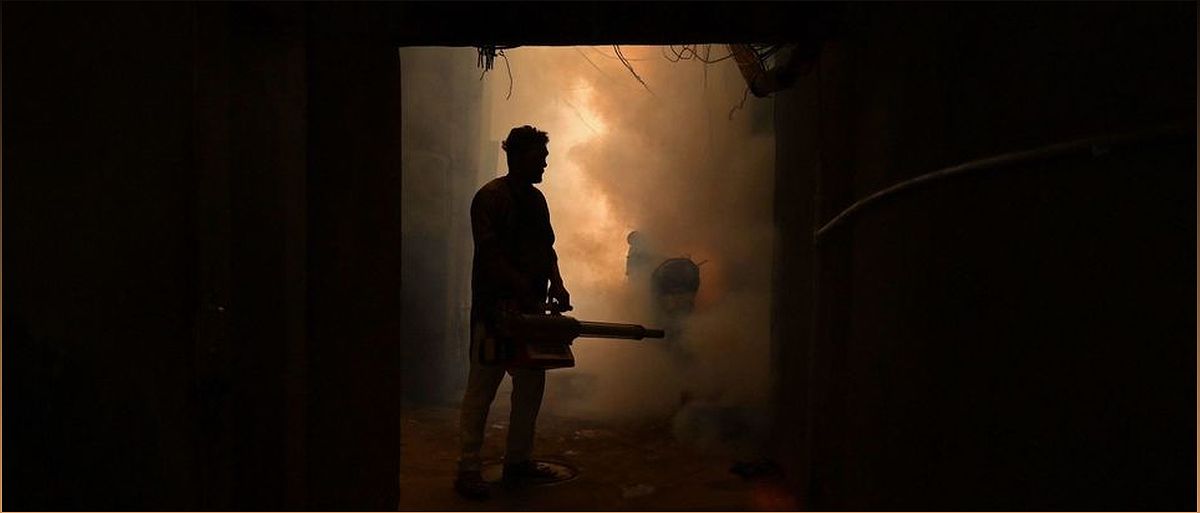The World Health Organization (WHO) has reported a tenfold increase in global cases of dengue over the past generation. Climate change and the spread of virus-carrying mosquitoes are contributing factors to the transmission of the disease, which is most prevalent in the Americas. Find out how changing distribution patterns of mosquitoes, along with increased rainfall, humidity, and heat due to climate change, have led to the rise in cases. Explore the urgent need for effective measures to combat this fast-spreading mosquito-borne disease and prevent a potential pandemic. Discover the challenges faced in developing specific treatments and the importance of vaccines and innovative solutions like Wolbachia-infected mosquitoes. Stay informed about the warning signs and severe complications of dengue, and understand the impact it can have on weaker health systems. While dengue is not established in Europe, learn about the locally spread cases in the southern part of the continent since 2010. Stay updated on this global health crisis and the efforts being made to control its spread.
The Alarming Rise of Dengue Cases
Dengue cases have seen a tenfold increase worldwide, according to the World Health Organization (WHO). The prevalence of the disease has surged over the past generation, with the Americas being the most affected region. This rise can be attributed to climate change and the proliferation of virus-carrying mosquitoes.

Climate change has led to changing distribution patterns of mosquitoes, coupled with increased rainfall, humidity, and heat. These conditions create a favorable environment for the mosquitoes to thrive and spread the dengue virus. As a result, the number of reported cases has skyrocketed, reaching a record 5.2 million in 2019 compared to 500,000 in 2000.
The Urgent Need for Effective Measures
The WHO has warned that dengue poses a pandemic threat and is the fastest-spreading mosquito-borne disease globally. Despite efforts to control its spread, there are currently no specific treatments for the virus once someone becomes infected. Vaccines and innovative solutions, such as Wolbachia-infected mosquitoes, show promise in combating dengue.

However, it is crucial to develop and implement effective measures to prevent the further transmission of the disease. This includes enhancing mosquito control programs, improving surveillance systems, and educating communities about preventive measures like eliminating breeding sites and using protective measures against mosquito bites.
The Impact on Weaker Health Systems
Dengue poses a significant burden on weaker health systems, particularly in countries with limited resources and infrastructure. These systems often struggle to provide adequate healthcare services and surveillance to effectively monitor and control the disease.

The lack of resources and infrastructure can lead to delayed diagnoses, inadequate treatment, and limited access to preventive measures. It is crucial to strengthen these health systems to better respond to the growing threat of dengue and protect vulnerable populations.
The Warning Signs and Severe Complications
Dengue can range from mild illness to severe complications. It is important to be aware of the warning signs that indicate a more severe form of the disease. These signs include intense abdominal pain, persistent vomiting, bleeding gums, fluid accumulation, lethargy or restlessness, and liver enlargement.

In some cases, dengue can lead to severe complications such as shock, severe bleeding, and organ impairment. Repeat infections can also result in severe disease, including hemorrhaging and even death. Recognizing these warning signs and seeking medical attention promptly is crucial for timely treatment and management of the disease.
The Spread of Dengue in Europe
While dengue is not established in Europe, there have been cases of local transmission in the southern part of the continent since 2010. This is concerning as it indicates the potential for the disease to spread to new regions, including areas with previously low or no dengue transmission.
The emergence of locally spread cases in Europe highlights the need for vigilance and preparedness in regions that have not traditionally been affected by dengue. Strengthening surveillance systems and implementing preventive measures are essential to prevent further spread and protect public health.
